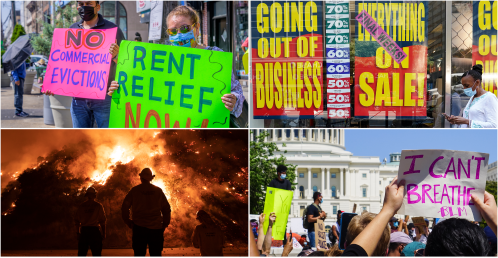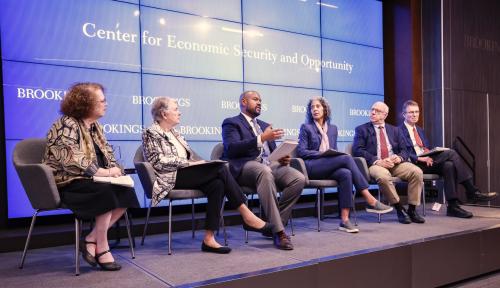While local governments, developers, and communities usually lead placemaking efforts, the state of Michigan stands out for its embrace of place-based policy as a key economic development strategy. The state’s motivation is clear—after globalization and technological change undermined the state’s core economic strengths, and the Great Recession sent the economy into a tailspin, the state needed a new set of community investment tools to accelerate its transition to the new, knowledge-based economy.
The results are promising: A recent Dynamo Metrics’ report on the Michigan Economic Development Corporation’s Community Development Incentives (CDI) programs found that its placemaking and place-based investments produced improvements in neighborhoods and commercial corridors by increasing occupancy rates and property values by $659 million in residential and $3.2 billion in commercial buildings from 2008 to 2019.
Although these results are encouraging—particularly in a state managing such a dramatic economic transition—evaluating the impact of placemaking by measuring property values and occupancy rates is insufficient. As Hanna Love and Cailean Kok pointed out, these traditional measures alone do not adequately capture the comprehensive effects of place-based investments, particularly for underserved community members. Higher property values may benefit some property owners and boost revenue streams for state and local governments, but they could disadvantage renters and local business tenants by limiting accessibility and affordability.
To achieve the broader range of positive impact possible with place-based investments, policymakers at all levels should take an integrated approach to transformative placemaking, which enables them to design their strategies and evaluate their results more holistically.
A new report, “State resilience and recovery: Strategies to reduce inequality and promote prosperity by creating better places,” from the Bass Center argues that states can advance transformative placemaking strategies to improve the lives and livelihoods of their residents, providing examples of successful state-level efforts. By exercising their full range of powers, states can dramatically affect the economic, physical, social, and civic conditions in places by granting new authorities, making investments, enabling collaboration, and modelling their own behavior.
Here are a few highlights of how Michigan is using state policy to transform its places. These examples show how other states can leverage their own assets to catalyze revitalization by finding creative ways to finance projects and engage diverse stakeholders.
SmartZones
Through its SmartZones program, the state of Michigan authorizes local governments to create tax increment financing districts and a local development finance agency and provides specialized funding to promote the creation of high-tech clusters. The state also encourages collaboration between multiple localities and entities by giving priority consideration to plans that involve public, private, and non-profit partners including universities.
Michigan currently supports 20 SmartZones as connected, innovative economic ecosystems that are leveraging and empowering local assets, including local institutions, entrepreneurs, and residents. For instance, companies assisted by Ann Arbor Spark, a non-profit intermediary in the Ann Arbor/Ypsilanti SmartZone, created 5,900 jobs and received $926.7 million in new investment between 2014 and 2019.
While nurturing an innovative economic ecosystem is a primary goal of the SmartZones program, the following two programs focus on redeveloping community places located in traditional downtowns and commercial districts.
Redevelopment Ready Communities
The Redevelopment Ready Communities program builds the capacity of communities to make them more competitive and ready for development. In addition to financial support, the state of Michigan conducts an assessment and provides training in current best practices in economic development. In their best practices the state clearly sets expectations and promotes a more inclusive, sustainable vision for communities. For example, best practices include:
- The downtown or corridor plan includes mixed-use and pedestrian-oriented development elements.
- The ordinance allows mixed-use buildings by-right in designated areas of concentrated development.
- The plan identifies key stakeholders, including those not normally at the visioning table.
Moreover, the state recently updated the structure and best practices of the program based on the inputs it received from communities and partners. This can serve as a model for behavior, encouraging local governments and partners to engage more with their community and partners and consider their feedback throughout the decisionmaking process.
Public Spaces Community Places
Even though the Dynamo Metrics evaluation of the Public Spaces Community Places program focused on the program’s traditional economic value, the program actually provides an excellent example of a transformative place-based strategy.
In 2014, Michigan launched a creative crowd-granting program with private partner Patronicity to revitalize or create public spaces based on the understanding that a quality place is a critical component of retaining local talent and attracting investment. Under the program, the state provides matching grant funds to communities for eligible projects that can raise additional resources by crowdfunding. This financing mechanism not only enables community members and local organizations to be more engaged in placemaking process but also fosters community pride as they become more invested.
In addition, the state requires applicant communities at least to engage in the Redevelopment Ready Communities program. By doing so, the state can ensure that community efforts are aligned with the community’s needs and goals and that they can maintain momentum for revitalizing their places.
Through these intersecting programs, the state of Michigan helps communities struggling with economic transition and disinvestment to improve their economies and built environments, create community vitality, and strengthen their capacity to design and implement placemaking strategies.
Other states should take a page from Michigan’s playbook, seizing this potentially historic moment: Last month, the House Budget Committee advanced the $3.5 trillion Build Back Better Act, describing the legislation as “the transformative investments at the scale necessary to meet the needs of the American people.” To genuinely transform their communities, rather than simply channeling these funds through status quo frameworks and programs, states should learn from each other and invest in place-based policies like those showcased in the Bass Center report. They are proven models for making communities more prosperous, vibrant, connected to opportunity, and resilient to the challenges yet to come.








Commentary
Embracing placemaking as a core state strategy
October 21, 2021